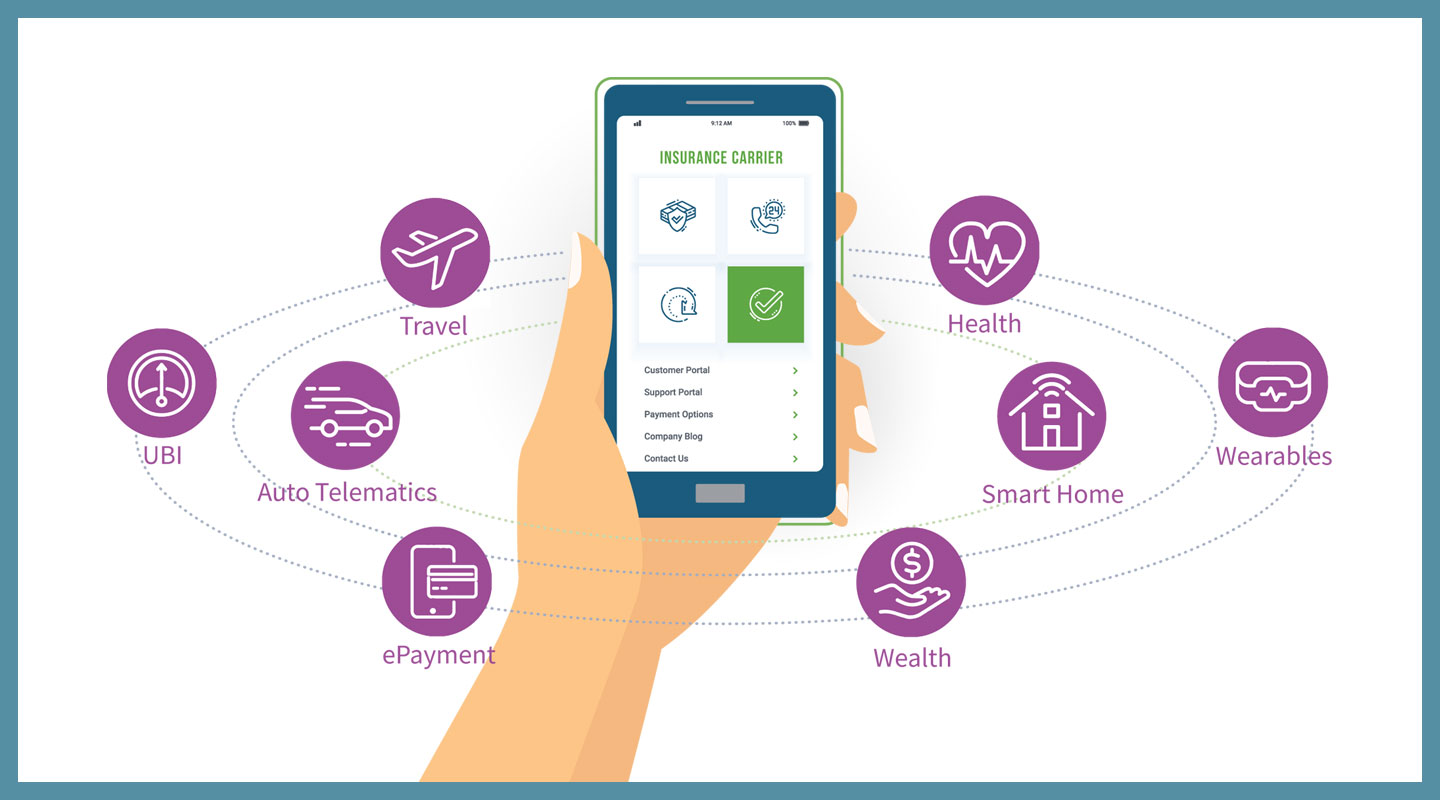Today, an insurer can still compete and win based on products. Tomorrow, it’s a different story.
Customers are demanding insurers reimagine the customer journey, making it faster, more convenient, and most importantly: customer-centric. Life insurers have success when they provide assistance, personalization, and the right mix of products and services to the right consumers at the right time.
That’s what digital insurance ecosystems are all about.
What is a digital insurance ecosystem?
A digital insurance ecosystem is an interconnected network of companies that creates more collective value for the customer than one party could deliver single-handedly. When it’s done with the customer in mind, these additional elements and capabilities offer them a more pertinent and personalized range of products.
Think: A life insurance company partnering with like-minded businesses to offer customer wellness, lifestyle, healthcare, and financial services, like gym memberships, the Peloton® app, Weight Watchers® meals or membership, just for example.
Creating an insurance ecosystem means spinning a sticky web for customers to come back to you over and over again for a wide range of relevant products and services. It can also lead to new, unique distribution channels for your life insurance company and a variety of business partners. According to our “2020 Insurer Compass Report,” conducted by Insurtech Insights, even then more than half of insurance companies — fully 66% — were already partnering with non-insurers to diversify their customer offerings.
And insurers aren’t the only ones. In fact, McKinsey & Co. suggests that ecosystems will constitute 30% of global revenues, or $60 trillion in additional revenue opportunities, over the next few years.
How can my insurance company create a digital ecosystem?
Insurers can engage in a digital ecosystem of products and services in three ways:
- Joining an existing ecosystem of products/services
- Launching their own ecosystem
- Engaging both strategies simultaneously
Joining an existing ecosystem offers insurers new and diverse distribution channels but often means giving up some control over the customer experience. On the other hand, launching your own ecosystem offers the opportunity to differentiate your brand but also demands significant legwork to scale, create partnerships across industries, and attract customers. A hybrid strategy will provide both.
Regardless of the type of ecosystem you chose to participate in, a highly capable digital insurance platform must serve as its backbone. Ecosystems require technology that’s flexible, open, and able to support rapid integrations across your lines of business to match those of your ecosystem partners.
Unfortunately, the legacy policy administration systems many insurers currently operate on simply were not designed to support digital insurance ecosystems.
Unlike other insurtechs, EIS’ coretech platform is purpose-built to enable insurers to create and operate digital insurance ecosystems. The cloud-optimized EIS coretech platform offers enterprise scalability, open APIs, microservices, and the event-based workflows necessary to support ecosystems and other emerging business models — aka what’s next.
For more information on building an ecosystem of products and services and other ways to reach customers, download EIS’ “How to Become a High-Velocity Insurer and Win in the New Digital Economy.”




